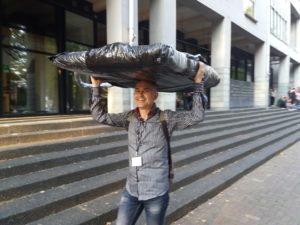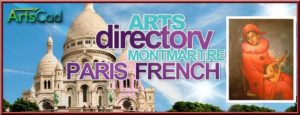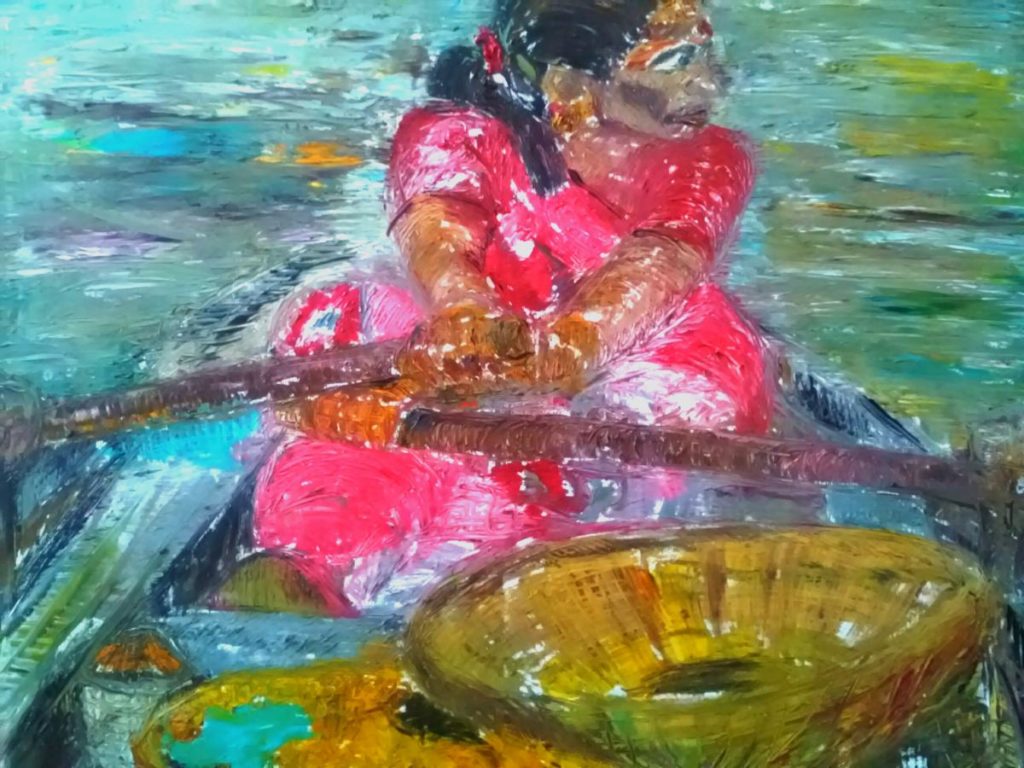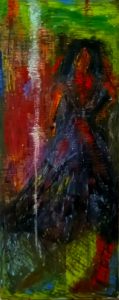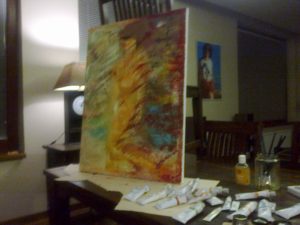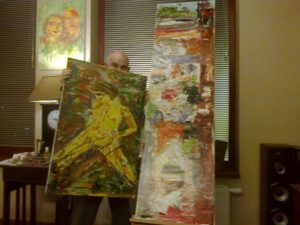20 godzin jazdy, jak szprota w puszce osiągając podobne stężenie zapachu i czując współczucie dla biednych ryb.
20 hour’s ride, packed in like a sprat, actually smelling like one and sympathizing with the poor fish.

Chwytając swe ramy, z zapałem przytwierdziłem swoje wizje wspaniałego świata do ściany galerii na Loods 6, utwierdzając się, że sztuka rodzi się w mękach.
Grabbing the paintings, I have enthusiastically attached my visions of the magnificent world to the walls of the Art Gallery at Loods 6, admitting that art is born in torment.
Szczęściem moja zawsze wspierająca żona, swoim łagodnym uśmiechem przekonywała mnie o słuszności moich działań.
Luckily, my always-supportive wife has convinced me with her gentle smile that I am doing the right thing.

Z tyłu głowy brzmiały słowa znajomego: ,,Amsterdam miasto grzechu”. Z dreszczem emocji i lękiem pierwotnym nieufnie patrząc na przechodniów udałem się do centrum. Woń powietrza, tłumy spokojnych ludzi, życzliwość i wyrozumiałość dopadała mnie z każdym kolejnym krokiem. Wręcz sparaliżowany usiadłem na kawie i ciastku.
At the back of my mind I had the words of my acquaintance: “Amsterdam, the sin city”. Looking suspiciously at the people passing by, I went to the centre with a thrill and primal anxiety. The smell of the air, crowds of peaceful people, kindness and understanding were catching me throughout my way. Being almost crippled, I sat down to have some coffee with a cake.
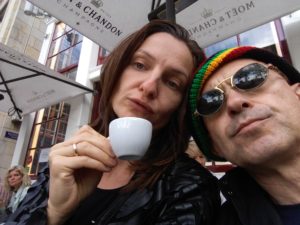
To musi gdzieś tu być… Trudno. Zobaczę się z van Goghiem i Rubensem. Fajne chłopaki. Może zahaczę o jeszcze kilka miejsc.
It must be somewhere here… So be it. I will meet van Gogh and Rubens. These are cool guys. Maybe I will also see some other places.
https://www.facebook.com/krzysztof.konopka.7902/videos/2026468254256223/
Wracam na wystawę.
I am getting back to the exhibition.
Loods 6
Budynki industrialne dawnej hali portu pasażerskiego. Prawie setka artystów z całego świata. Atmosfera życzliwości i przyjaźni, chęci wymiany myśli, poglądów, wrażeń, odczuć.
The industrial buildings of the former passenger port hall. Almost a hundred artists from all over the world. The atmosphere of kindness and friendship, the willingness to share ideas, views, impressions and feelings.
Od tego gadania bolą nas ręce i nogi, ale jesteśmy szczęśliwi. Zalążki nowych przyjaźni.
My hands and legs are in pain after all that talking, but we are happy. New friendships have been born.
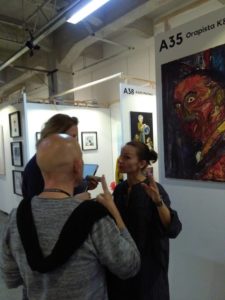
Nie można nie wrócić.
It’s not possible not to come back again.
